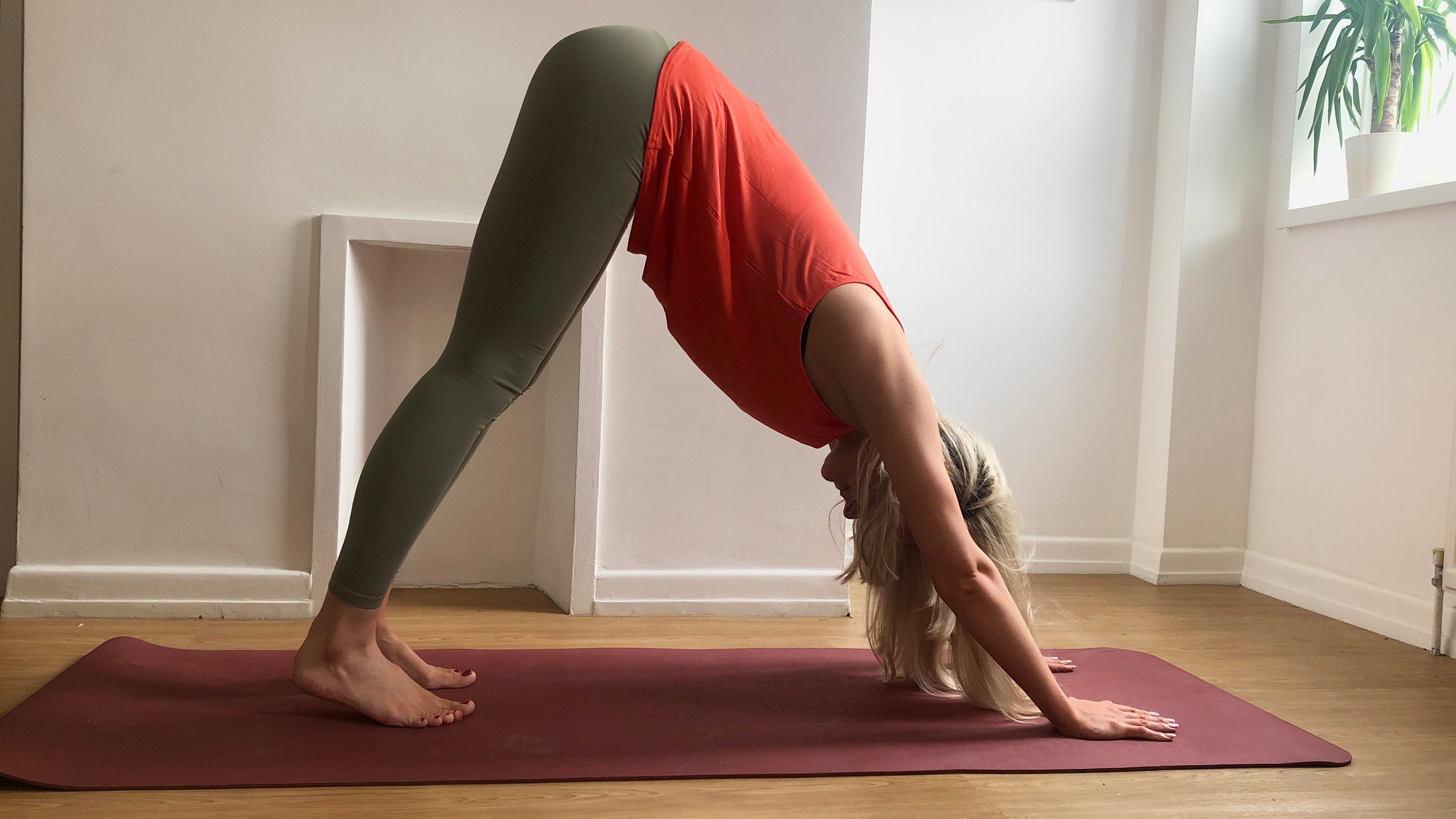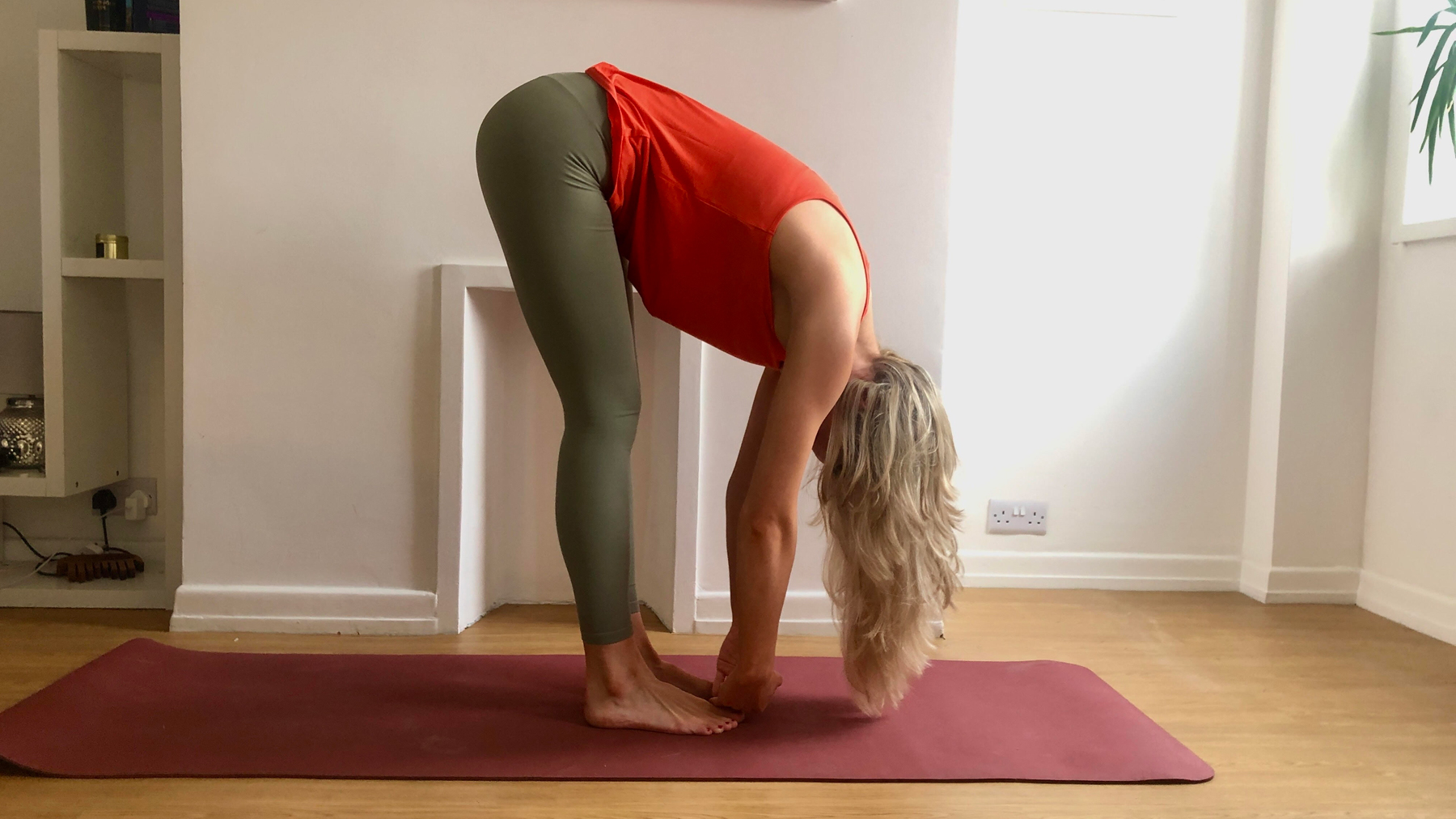I did yoga every day for 30 days and this is what happened to my body
I set myself the challenge of doing yoga every day for a month and the results were incredible


Yoga is something I’d never devoted much time to before deciding to complete 30 days of yoga in a row. However, the disciplined and regular practice of this activity quickly changed my perspective on yoga.
I’d heard a LOT of hype over Yoga with Adriene, a lady who took the internet by storm over lockdown with millions of views on her videos teaching people how to practice yogi. After watching one video I was hooked and had visions of myself becoming a yogi like Adriene. This surprised me as you’ll typically find me opting for more high-intensity exercise over anything else. But ever since COVID entered the scene, there've been the odd moments of quiet so I decided to use this time to challenge myself to 30 days of yoga to see what changes I may or may not notice.
Victoria Chamron Yoga Instructor and Wellness Coordinator at Birch Community told Fit&Well that yoga is an exercise that is free of judgment or expectation. “You can rest, recharge and take a minute to care for yourself,” she added, “Yoga can be a form of meditation, a moving meditation. Try it and you might feel that you come out of an active session feeling more rested than when you went in.”
I liked the sound of how welcoming yoga was meant to be and after hearing and researching the many benefits of it I wanted to see how legitimate and transferrable the benefits of yoga could be in a normal person’s everyday life - AKA me. So I grabbed the best yoga mat and followed a Yoga with Adriene 30 days of daily yoga program. Here’s what happened.
I felt stronger inside and outside
With yoga being a strength-based practice I should have expected to notice a change in this department. However, I was definitely surprised at how quickly I started to feel like my body was growing in power and I even noticed definition form around my core.
I’m not saying I grew a six-pack from doing my daily downward dogs but the practice of yoga helps you to connect your mind and body and the more I got the hang of this the more I engaged major muscle groups in a session.
This advice from Chamron is essential for anyone else who fancies starting yoga: “I often say to ‘embrace the wobbles’ when I am teaching my classes - because sometimes those wobbles make us stronger.”
Start your week with achievable workout ideas, health tips and wellbeing advice in your inbox.
I myself noticed a real difference in my strength and ability in yoga as I progressed through the days. By day ten or eleven I felt that my body went from shaking as I moved from one position to another to then being able to do this in a state of flow. And I did feel like a bit of a warrior the more I managed to hold a strong and empowered warrior one pose.
Yoga is meant to be an empowering exercise which could partially explain why I felt like my strength was growing as I progressed. After all, yoga is designed to use your own body weight to build and tone your muscle and there is science to back this up.
In this study published in the International Journal of Yoga, researchers recruited 71 participants from air force personnel to find out what would happen if they practiced yoga for an hour every day for twelve weeks. They discovered that not only did their muscular strength improve but so did their flexibility and they even noticed reductions in body weight.
The great thing about the study above is that they wanted to see if the results would be the same across different age groups and indeed they were - making yoga a very accessible physical activity compared to other forms of exercise.
Other exercise felt easier
I've always been more prone to suffering from hip or knee injuries and as someone who loves fitness for both the physical and mental benefits, an injury in either of these joints can be really frustrating.
After the 30 days of yoga, I felt less weakness in places like my knee and hips as I completed other exercises such as a 5K run or a weighted leg workout at the gym.
The strength that I had developed all over my body most likely played into this. It was as if the low-impact stress I was placing on my body during yoga had increased my mobility and improved my range of motion. These areas of my body weren't as stiff now and could withstand the higher impact of a run better now.
Iyengar yoga is a branch of yoga that focuses on detail, precision, and alignment and has been used in research to treat the symptoms of joint pain. In a study published in the National Library of Medicine journal, scientists found that pain was reduced for participants who suffered from osteoarthritis of the knee after completing Iyengar yoga every day for eight weeks. They concluded that yoga had the potential to be a nonpharmacologic intervention for knee osteoarthritis.
We’re always told to warm up before exercise and when you think about it, this is like a miniature yoga session to wake up and loosen your muscles and joints to function well when you put them to work. When you add this to regular sessions of yoga practice you are training your body to hold your posture and weight better.
A post shared by Jessica Downey (@jessrunshere)
A photo posted by on
I developed a clearer headspace
Sometimes when people go through high-stress situations they make a joke that they need some yoga to zen them out, and they aren’t wrong.
Chamron noted how good yoga is for connection, “A really important part of yoga is connecting with your breath. Understanding how to link movement with breath, and how to really feel yourself within your own skin,” she said.
I gradually noticed myself thinking more clearly and rationalizing any worries I had the more I progressed through the 30 days of yoga. This didn’t happen immediately though.
At first, I struggled to really stop and be present in the moment especially when I had to sit still in one position, like in the Child’s Pose, just focusing on my breathing and nothing else. I would find myself thinking about what I am having for my dinner later or how long I had to get ready to leave the house afterward.
But, my consistency paid off, and the more I practiced being more present in my yoga the more present I became in my everyday life. This I think brought a state of calm to my mind when life felt intense - which it often has done in a pandemic.
I did wonder if this was a case of placebo because I knew people who regularly practiced yoga tend to be very chill but there is research to back this up.
The effects of yoga on people’s mental state has been the center of multiple scientific studies over the years and results suggest there is a real positive association here.
One research report showed that women who practiced yoga twice a week experienced significant improvements to their mental health. The researchers found that regular yoga sessions relieved symptoms of depression and anxiety among the women and even noticed reduced headaches and back pain for participants who suffered from this prior to taking part in the yoga trial.

Yoga helped me build healthier habits
On the first morning, I decided to take on all yoga stereotypes and practice yoga outside, barefoot in my garden with a mat. Despite the grand vision I had built up in my mind about this, the crisp winter morning had other plans for me. It was freezing and not as satisfying as I had hoped.
However, Chamron highlighted that you must appreciate yourself for turning up and not to give up. So I kept at it, moving things inside for the remaining 29 days of yoga. Through keeping this part of my morning routine for a month I benefitted from the consistency. My days started earlier yet I didn’t feel sluggish or have a midday crash. My morning yoga sessions helped my whole body and mind to gradually wake up for the day.
I also found that I was better at staying consistent with running and the gym. This, I think, is down to two things, one being my productivity increased from creating a morning ritual, two was that I liked the physical effect yoga was having on my body so I was more encouraged to complete a workout later in the day.
Another thing that took me by surprise was the impact it had on my diet. Generally speaking, I like to think I eat healthily 95% of the time but parts of the pandemic saw me snacking more out of boredom or eating more comfort foods.
Very early on in my 30 days of yoga challenge, I noticed that I very naturally gained more control of what I ate and not in an unhealthy obsessive way but in a way that made my body feel good. I listened more to my body and became more aware of when I was actually hungry or when to stop eating so that I feel a healthy full and not an uncomfortable full.
This was a sign that my body was probably becoming more in tune with my mind and most likely also why I craved more nutritious foods over sugary snacks instead. Without sounding cliche, I think yoga does form a lifestyle that shapes other parts of your health.
I’m not alone in recognizing a change in my eating habits and practicing yoga. A study published in Journal of the American Dietetic Association revealed that regular practice of yoga promotes mindful eating and those who eat more mindfully have less chance of being obese.
Mindful eating adopts a more holistic approach toward eating that can help people build healthier and more positive relationships with food and something that I certainly benefitted from my yoga practice.
Eating shouldn’t be based on restricting yourself ever but be about fuelling your body. I like to keep my diet full of color and nutrition and one thing that helps with this is vegetable-rich meals, many can be found in one of the best vegan cookbooks. Plenty of protein is also great for building and repairing muscle in your body, you can always top this up with a best protein powder for weight loss.
Jessica is an experienced fitness writer with a passion for running. Her career in journalism began in local news and she holds a Masters in journalism. Jessica has previously written for Runners World, penning news and features on fitness, sportswear and nutrition.
When she isn't writing up news and features for Fit&Well covering topics ranging from muscle building, to yoga, to female health and so on, she will be outdoors somewhere, testing out the latest fitness equipment and accessories to help others find top products for their own fitness journeys. Her testing pairs up nicely with her love for running. She recently branched out to running 10Ks and is trying to improve her time before moving on to larger races. Jessica also enjoys building on her strength in the gym and is a believer in health and wellness beginning in the kitchen. She shares all of this on her running Instagram account @jessrunshere which she uses for accountability and for connecting with like-minded fitness lovers.
